Yamaha Clavinova CLP-440PE Handleiding
Bekijk gratis de handleiding van Yamaha Clavinova CLP-440PE (4 pagina’s), behorend tot de categorie Piano. Deze gids werd als nuttig beoordeeld door 31 mensen en kreeg gemiddeld 4.3 sterren uit 16 reviews. Heb je een vraag over Yamaha Clavinova CLP-440PE of wil je andere gebruikers van dit product iets vragen? Stel een vraag
Pagina 1/4

1
MIDI Basics
1. What’s MIDI? . . . . . . . . . . . . . . . . . . . . . . . . . . . . . 1
2. What You Can Do With MIDI. . . . . . . . . . . . . . . . . 2
3. MIDI Channels . . . . . . . . . . . . . . . . . . . . . . . . . . . . 3
4. MIDI Messages. . . . . . . . . . . . . . . . . . . . . . . . . . . . 4
1. What’s MIDI?
MIDI is an acronym that stands for Musical Instrument Digital Interface, a technology that allows
electronic musical instruments to communicate with each other, by sending and receiving performance infor-
mation.
Just what do we mean by “performance information”? Let’s consider what happens when a pianist per-
forms.
The pianist presses a key on a piano or presses a pedal.
These actions are instances of “performance information” and
reflect how the pianist played the instrument. MIDI is used to
capture and express this information electronically. When you
strongly play middle C on a MIDI keyboard, MIDI indicates the
key number as 60, and the strength of playing as 120, for exam-
ple. In this way, MIDI precisely describes your performance infor-
mation in digital form.
This performance information—MIDI data—can be
transmitted between MIDI-compatible musical instruments, or
saved as a file for later playback. No matter what instrument or
computer you use, the MIDI data will reproduce the original per-
formance exactly the same. (Keep in mind that the actual sound
of the performance may differ from instrument to instrument—
for example, the acoustic piano sound on one instrument may
sound more full and rich than on another—but the basic perfor-
mance will be identical.)
The MIDI data saved as a file can easily be changed. For
example, you can change an incorrectly played note to the cor-
rect one, change the song tempo, transpose the song to a desired
key, etc. This feature of MIDI is very effective for creating a song
or practicing with a musical instrument.

2
2. What You Can Do With MIDI
By connecting multiple MIDI devices (musical instruments and/or computer) with a cable, the MIDI data
can be transmitted and received. For example, if you record your keyboard performance as a MIDI data, the
recorded data can be transmitted to another instrument (or computer) and played back on it. You can even edit
that data on the computer. You can also buy MIDI data (computer files) of your favorite songs from Internet
websites (such as yamahamusicsoft.com) and listen to the data by playing it back on your instrument or com-
puter.
Generally, MIDI cable is used for connecting an instrument to another instrument, and USB cable is used for
connecting instruments to a computer. For details, refer to the owner’s manual of your instrument.
MIDI data has the following advantages over audio data:
• The data size is much smaller than audio data such as mp3, wav, etc.
• The data can be effectively and easily edited.
(Example 1) Using one keyboard to control a second, connected keyboard
(Example 2) Recording your keyboard performance to computer and editing the data
Edited data can be played back on the keyboard again.
Proper sequencer software must be installed to the computer in order to edit MIDI data.
(Example 3) Playing back MIDI data which you have bought from an Internet website on
your instrument
The MIDI data can be loaded to your instrument via USB flash memory.
In order to connect USB flash memory, your instrument must have a USB TO DEVICE terminal.
NOTE
MIDI instrument MIDI transmit
MIDI OUT MIDI IN
MIDI instrument
USB cable
USB TO HOST USB
Computer
NOTE
USB flash memory
USB USB TO DEVICE
Internet website
MIDI instrument
NOTE

3
3. MIDI Channels
MIDI performance data is assigned to one of sixteen MIDI channels. Using these channels, 1–16, the
performance data for sixteen different instrument parts can be simultaneously sent over one cable.
For example, when you play a song on your keyboard, the song contains many parts—right-hand part, left-
hand part, rhythm part, bass part, etc. On most instruments, different MIDI channels are assigned automatically
to each part. When this MIDI song is transmitted to another instrument via a MIDI cable, each part is transmit-
ted simultaneously, yet over separate channels.
Part (track) of
your instrument
MIDI Transmit
Channel
MIDI Receive
Channel
Track of instrument
receiving MIDI data
Right-hand part Ch. 1 Ch. 1 Track 1
Left-hand part Ch. 2 Ch. 2 Track 2
: : : :
Rhythm 1 part Ch. 9 Ch. 9 Track 9
Rhythm 2 part Ch. 10 Ch. 10 Track 10
Bass part Ch. 11 Ch. 11 Track 11
: : : :
: Ch. 16 Ch. 16 Track 16
MIDI instrument
MIDI transmit
MIDI cable
MIDI OUT MIDI IN
MIDI sequencer
Product specificaties
| Merk: | Yamaha |
| Categorie: | Piano |
| Model: | Clavinova CLP-440PE |
Heb je hulp nodig?
Als je hulp nodig hebt met Yamaha Clavinova CLP-440PE stel dan hieronder een vraag en andere gebruikers zullen je antwoorden
Handleiding Piano Yamaha

5 Juni 2025

3 Juni 2025

3 Juni 2025

3 Juni 2025

3 Juni 2025

3 Juni 2025
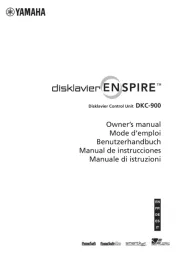
25 Maart 2025

4 Maart 2025

4 Maart 2025

21 Februari 2025
Handleiding Piano
- NUX
- Dexibell
- CLXmusic
- Native Instruments
- Artesia
- Technics
- Orla
- Crumar
- Max
- IDance
- Nord
- Casio
- Startone
- Carry-on
- Vox
Nieuwste handleidingen voor Piano
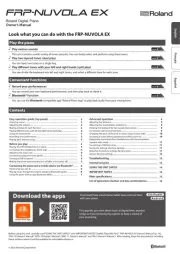
27 Augustus 2025

25 Augustus 2025
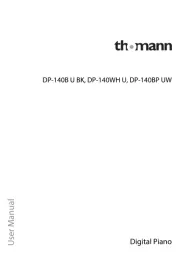
4 Augustus 2025

4 Augustus 2025
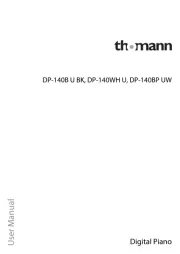
4 Augustus 2025
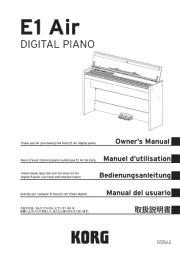
30 Juli 2025
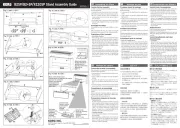
29 Juli 2025

21 Juli 2025
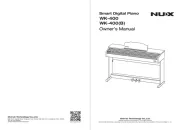
19 Juli 2025
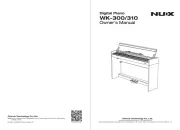
17 Juli 2025